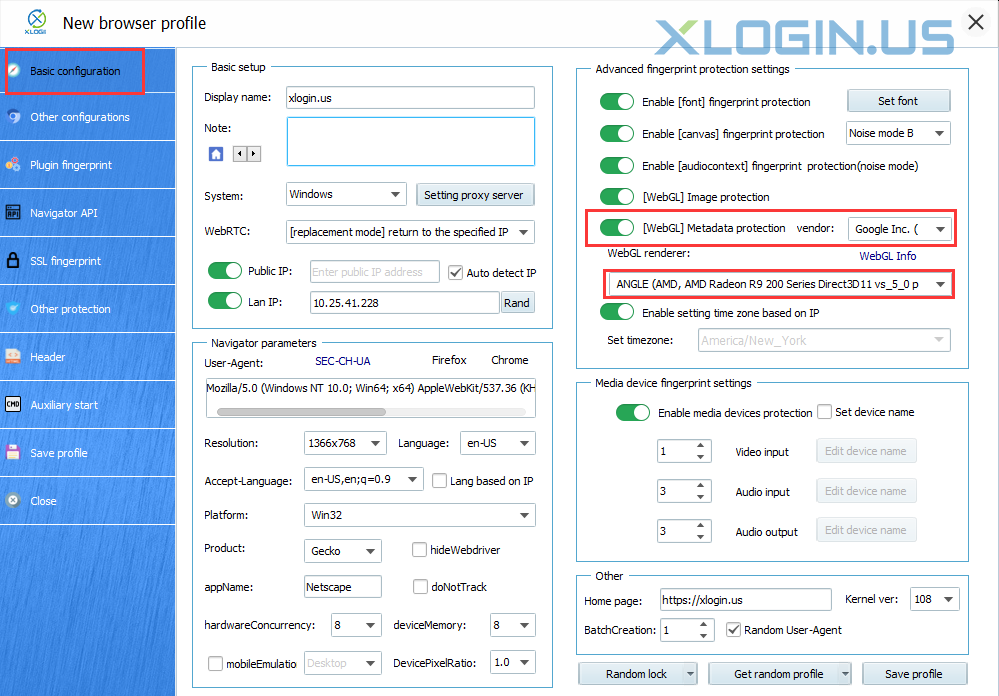WebGL is commonly known as the hardware graphics card model. XLogin provides graphics card chip fingerprints of multiple platforms and brands.
When we are doing experiments, there are two different values of WebGL vendor for Chrome browser and Internet Explorer (Edge) test, Chrome with Google Inc. Internet Explorer (Edge) with Microsoft, so WebGL vendor cannot be completely translated as "Graphic card supplier". “Vendor" as it relates to browser suppliers. It’s interesting that we found out the Firefox are with WebGL vendor: Google Inc.
Most of the old model Apple MacBook computers with Intel Inc. WebGL vendor, and the new ones are Apple.
Apple iPhones are all the same, WebGL vendor is Apple Inc., WebGL renderer is Apple Gpu.
Due to the different brands, models, and chips used in each generation of Android phones, the WebGL vendors and WebGL renderers will also be different. The specific information can be viewed on brands’ official websites.
When creating a configuration file, users enable WebGL metadata protection. WebGL metadata is masked by XLogin. XLogin will alter WebGL Vendor and Renderer parameters with values retrieved from a fingerprint database.
The software will automatically match the value randomly according to the operating system selected by the user, and the user can also customize the value based on their own needs.
Examples:
Windows WebGL vendor:Google Inc. WebGL renderer:ANGLE (AMD Radeon (TM) R9 370 Series Direct3D11 vs_5_0 ps_5_0)
Mac(1) WebGL vendor:Apple WebGL renderer:Apple M1
Mac(2) WebGL vendor:Intel Inc. WebGL renderer:Intel(R) Iris(TM) Graphics 6100
Iphone WebGL vendor: Apple Inc. WebGL renderer:Apple GPU
Android (1) WebGL vendor:Qualcomm WebGL renderer:Adreno (TM) 506
Android (2) WebGL vendor:ARM WebGL renderer:Mali-T880
